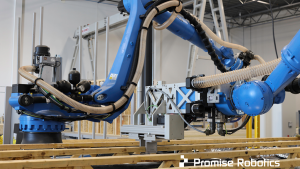Thirty-two per cent of general and trade contractors expect to be busier this year than in 2017, according to a poll of 500 contractors in various regions of Ontario.
“It’s a fairly strong, optimistic view,” said Katherine Jacobs, director of research, Ontario Construction Secretariat (OCS), which publishes the contractor survey annually.
ICI building permits jumped to almost $15 billion in 2017, after holding steady around $12 billion annually the five preceding years, Jacobs told delegates at OCS’s 18th Annual State of the Industry and Outlook Conference recently in Toronto.
All three ICI sectors “were firing” — with the commercial sector coming in at $7.18 billion. Most of the growth was in Ontario’s northern region, at 58 per cent, and the Greater Toronto Area was up 28 per cent, she said.
More than half of the contractors working in the engineering sector expect to see more work this year, while 39 per cent of the respondents see a pickup in institutional and highrise residential work.
Contractors are less optimistic about commercial/industrial, with only 35 per cent and 27 per cent respectively expecting to be busier, according to the survey.
Bricks and mortar retail is alive and well, said Jacobs, noting that while online shopping is providing stiff competition, shopping malls are expanding — fighting back with “destination centre” themes. Industrial permits were strong as well up 50 per cent over 2016.
There were 512,000 construction jobs in Ontario last year, a steady rise year over year since 2000, she said. Unemployment is 5.5 per cent — “very low…and something we should be keeping our eye on.”
When polled on what keeps them up at night, many contractors were concerned about how to replenish their dwindling labour supply as the aging workforce retires.
Another concern was taking on increasing risk — transferred down from owners to contractors, she said.
The industry’s evolution — technological leaps — is also an issue, with about a third of contractors questioning how to move forward to improve productivity. Many contractors, she said, feel “bombarded” by technology.
The OCS poll listed about 10 new technologies. Respondents are most apt to use advanced building materials, followed by automated vehicles and processes, prefabricated modular buildings and job-site data applications, she said.
Unpopular on jobsites are augmented and virtual reality technology, 3D printing and drones.
About 70 per cent of respondents see new tech as important for future business but 29 per cent saw it “as not important at all. They didn’t think it added value to their business.”
“It is important for us (the industry) to explore that and think about how we can start to change those perspectives…to adopt new technologies.”
While 16 per cent see new technology potentially reducing costs and 20 per cent of those polled would turn to it to improve productivity, Jacobs said a “prime motivator” for 39 per cent of the respondents “was the owner: Someone was telling them to do it.”
That has to change, she said. They need to see “that it is good for business growth, and not just because someone has told them to do it.”
The cost of new technology was the main barrier for a third of the contractors while another 25 per cent responded that technology has to prove itself before they will move ahead.










Recent Comments
comments for this post are closed